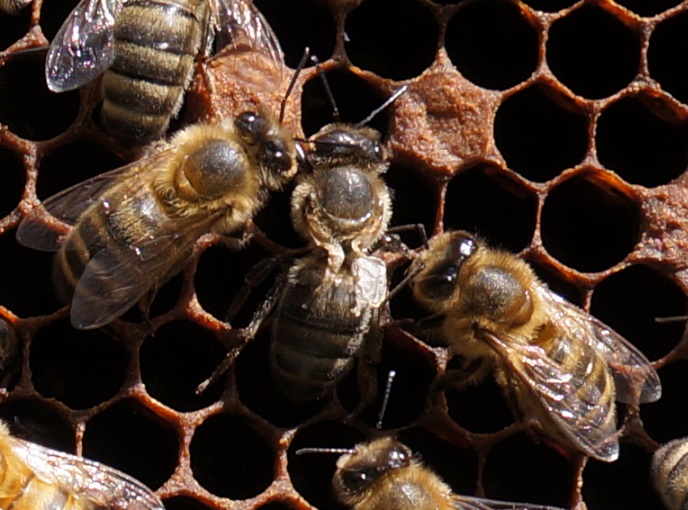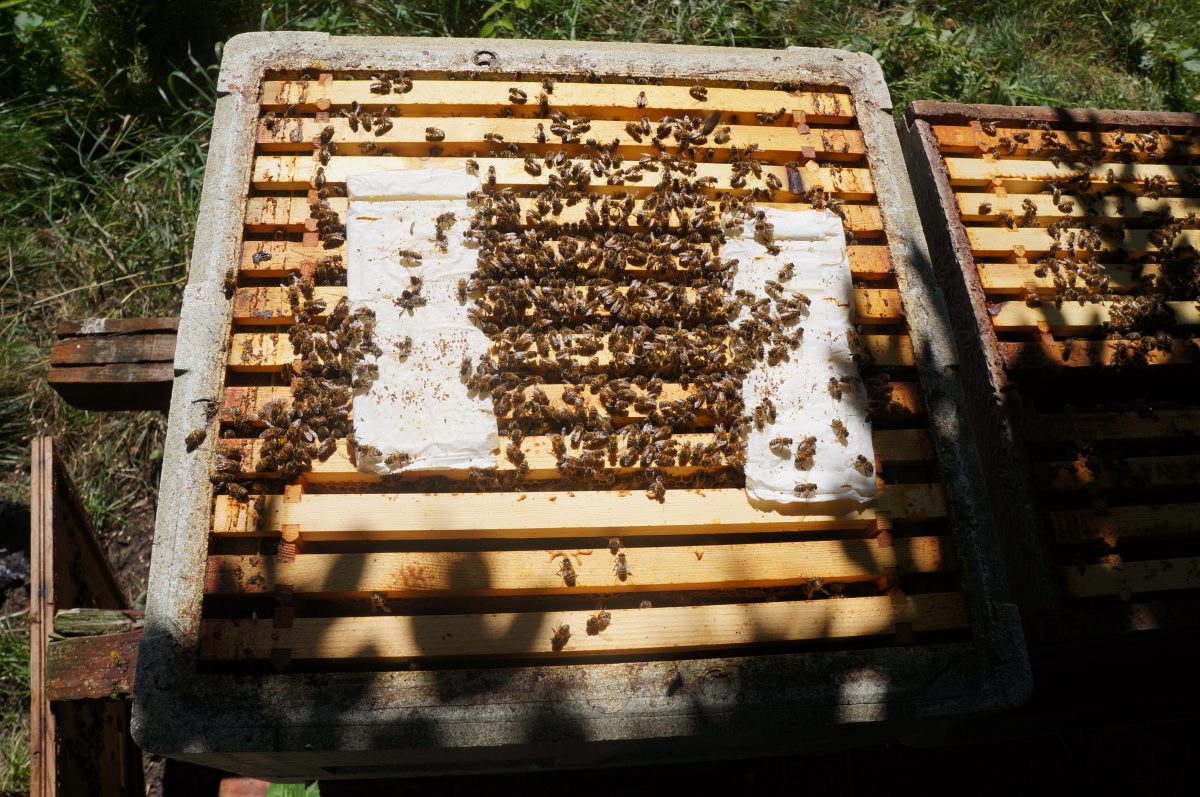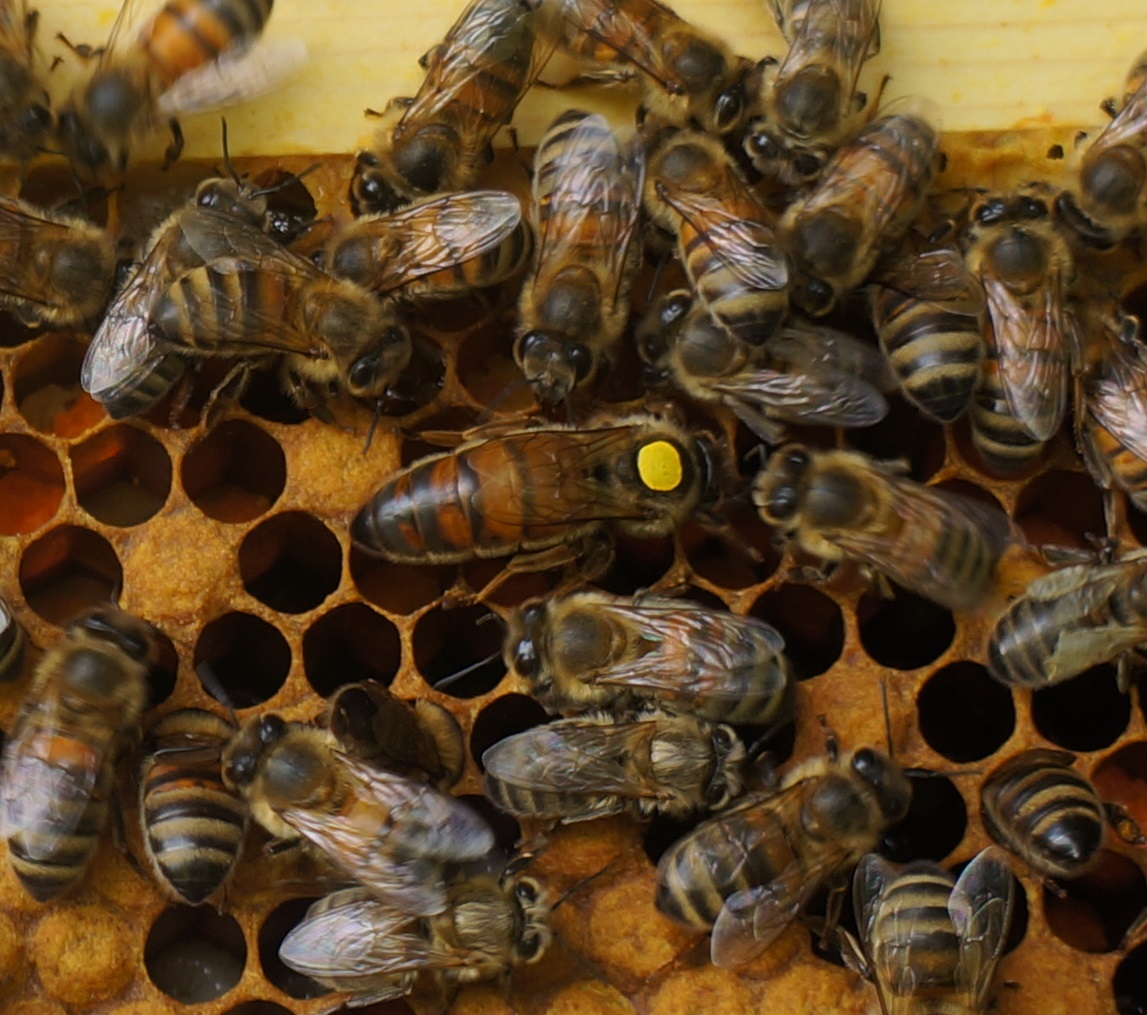 Abraham Lincoln
If given the truth, the people can be depended upon to meet any national crisis...
Abraham Lincoln
If given the truth, the people can be depended upon to meet any national crisis...
 Guildford news...
for Guildford people, brought to you by Guildford reporters - Guildford's own news service
Guildford news...
for Guildford people, brought to you by Guildford reporters - Guildford's own news service
Beekeeper’s Notes September 2017: Marauding Wasps, Honey And A Lot Going On
Published on: 1 Sep, 2017
Updated on: 13 Sep, 2017
Hugh Coakley keeps bees in Worplesdon. He talks about why wasps are so intrusive in late summer and why the bees get defensive. And the jobs that need doing ……..
It’s a busy time of year for everybody including the poor old wasp.
Throughout the rest of the year, you hardly notice them. Then suddenly, they’re there at every turn. Buzzing you in the garden if you are eating, sniffing around rotting fruit and hanging around beehive entrances just begging for an opportunity to sneak in and rob the honey.
Wasps hunt ants, caterpillars and so on in the spring and summer to feed the growing larvae in their nest. In return, the larvae excrete a sticky substance to reward the worker wasps.
But at this time of year, the wasp’s nest is changing. The queen has stopped laying, no more larvae and no more lovely sweet rewards from the grateful larvae. So they are desperate and will go for anything sweet to feed themselves. It won’t last long though. Only the hibernating queens will survive through the winter.
The bees themselves look to me to be quite defensive now. I guess that with their winter stores in place, they are nervous of a robbing attack by wasps and even other bees.
Bees robbing another, generally weaker, hive is a fearsome sight. It happened to me once where I hadn’t noticed a couple of small holes in a box that I had inherited. Once they detect ‘free’ honey, they go into a robbing frenzy. Frightening to see and very difficult to stop once started.
Prevention is very definitely better than the cure of fighting mad bees.
Honey bee queens are still laying, though reduced from its peak. It is great to still see a strongly laid frame full of brood. A sign of a good strong colony with brood laid ‘wall to wall’.

A lovely frame with ‘wall to wall’ brood. You can see the marked queen at the top of the frame and to the right. You can also see my camera strap. I don’t claim to be a David Bailey.
Now is the time for varroa mite treatment. A relatively new and popular treatment is a proprietary method called MAQS. Strips of material treated in formic acid which leaches out into the hive over a week.

Bee with deformed wing virus (DWV). See the stunted wings. They tend to have other abnormalities and don’t survive long. The virus is transmitted by the varroa mite and is said to be the “single greatest factor in the decimation of bee colonies worldwide”. No camera strap.

MAQS treatment with formic acid. Applied after honey has been harvested. The treatment claims to kill the varroa mite in the hive including within the capped brood.
On top of all that, there’s the honey extraction. Reasonable crop this year for me which is pleasing. Phew!

See Dragon story: GBC’s Explanation of Major Land Sale Notice Error ‘Borders on Arrogant’ Says Councillor







Recent Articles
- Times Rankings Showing GBC To Be Worst Council in Surrey Dismissed by Lib Dems
- Birdwatcher’s Diary No.303
- Letter: What a Scoop!
- Filmfest – a Festival of German Films
- Letter: Help Abroad Should Not Be to the Detriment of Those Here
- Armed Police Deployed After Fight at Ash Vale Pub – Four Arrested
- Surrey Schools Could Have ‘Meat-free Mondays’ If Strategy Adopted
- Man Sentenced to 60 Months Behind Bars After Kick Left Victim Unconscious
- Opinion: Action on Building Heights Is Needed Now
- Aux Nightclub Closes Suddenly – Police Investigation Underway


Search in Site
Media Gallery
Dragon Interview: Local Artist Leaves Her Mark At One of England’s Most Historic Buildings
January 21, 2023 / No Comment / Read MoreDragon Interview: Lib Dem Planning Chair: ‘Current Policy Doesn’t Work for Local People’
January 19, 2023 / No Comment / Read MoreA3 Tunnel in Guildford ‘Necessary’ for New Homes, Says Guildford’s MP
January 10, 2023 / No Comment / Read More‘Madness’ for London Road Scheme to Go Ahead Against ‘Huge Opposition’, Says SCC Leader
January 6, 2023 / No Comment / Read MoreCouncillor’s Son Starts Campaign for More Consultation on North Street Plan
December 30, 2022 / No Comment / Read MoreCounty Council Climbs Down Over London Road Works – Further ‘Engagement’ Period Announced
December 14, 2022 / No Comment / Read MoreDragon Interview: GBC Reaction to the Government’s Expected Decision to Relax Housing Targets
December 7, 2022 / No Comment / Read MoreHow Can Our Town Centre Businesses Recover? Watch the Shop Front Debate
May 18, 2020 / No Comment / Read More








Recent Comments